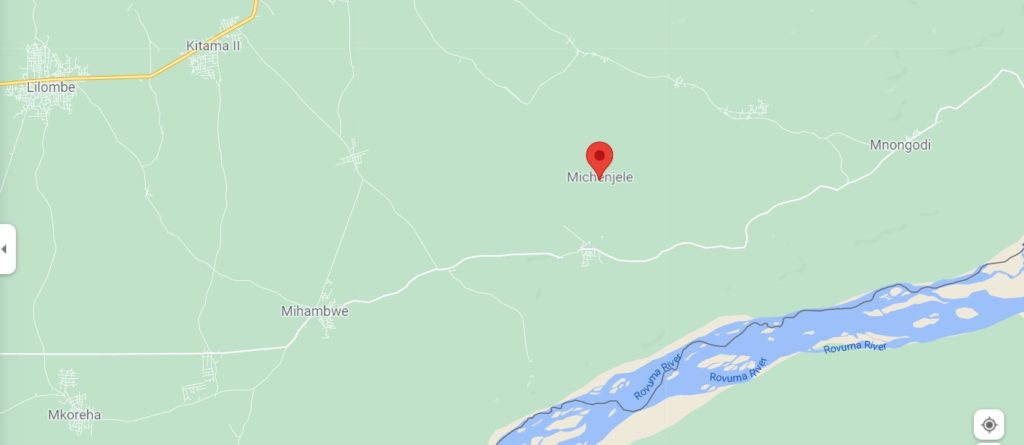Strategic Intelligence (@CTNSIS) Weekly Counter-Terrorism Intelligence Brief for East and Central Africa (Somalia, Mozambique, DR-Congo, Tanzania, Uganda): Tracking Islamic State Terrorists in Period of 22nd October- 29th October 2021


The Islamic State in the East and Central region has been gradually widening its areas of operations which continues to pose a greater threat. Islamic State Central Africa Republic (ISCAP) which was primarily operational in Mozambique’s Cabo Delgado (CD) province and the Democratic Republic of Congo (DRC) has launched attacks in Tanzania and Uganda.
The past week, signified the seeming launch of ISCAP activities in Uganda with two IED attacks in the country which introduced the group as more than a rebel group as frequently referred to by the Ugandan authorities. Tanzania recorded attacks as the group continues to scatter in CD and intelligence indicates the group likely movement across the border into Tanzania for food and other supplies.
The weekly activities of ISCAP are a clear indicator that the threat by the group is growing and is indicative of growing sophistication, training, and financial resources that allow the erection of sleeper cells with surveillance, bomb-making, and tech capabilities that help them to move and operate undetected. They have also highlighted the loopholes in the COIN strategies both by individual nations as well as a regional response on what is growing into a major regional crisis.
ISCAP Attacks in Mozambique and DRC (22nd October- 29th October 2021)
MOZAMBIQUE
- 24th Oct- ISCAP militants killed 3 people including a Christian leader in Chitama Village, Nangade District.
- 22nd Oct- 7 people were decapitated near Mucojo, Macomia where they were ambushed while they were fetching water.
- 22nd Oct- insurgents attacked Muidumbe District Administration Building where they left insignia on the walls. This area had been declared insurgents free by the military.
DRC
- 26th Oct- 12 Christians were killed after ISCAP militants attacked Masenze town in Northwest Beni, North Kivu.
- 26th Oct- 9 civilians were killed by ISCAP in Ngadule, a village west of the city of Oicha, Beni. They were attacked using knives and machetes
- 24th Oct- 4 civilians were killed in Tandika village, Beni in after ISCAP militants attacked them as they worshipped.
- 23rd Oct- 7 people were killed and at least a dozen missing after ISCAP attacked Gala district located in the commune of Bulongo in Beni territory.
- 22nd Oct- At least 4 people were killed in an ISCAP incursion in the commune of Bulongo, in the territory of Beni.

TANZANIA
- 22nd Oct- Suspected ISCAP insurgents attacked Kilimahewa in Tanzania. The village is on the Tanzanian side of the Rovuma River and is located between Michenjele and Mihambwe. They took several hostages who were later freed by the military active along the border.
UGANDA

- 23rd Oct– A bomb packed with nails and shrapnel was detonated at a restaurant in Komanboga neighborhood, Kawempe Division, Kampala, and left a waitress dead and three other people injured.
- 25th Oct- a suicide bomber set off a bomb on a bus in Lungala, about 30 km west of Kampala on the road to DR Congo killing himself and injuring several other people.
ANALYSIS AND INSIGHTS
In Mozambique, while the allied forces appear to be making headway in driving out the terrorists, Mozambican troops continue to be accused of trying to win a PR war that depicts the terror organization as defeated. This is however far from the truth as intelligence indicates that the organization has only been scattered but not defeated and has been attacking areas that the troops have otherwise claimed to have been cleared of terrorists. The government’s narrative differs from accounts from locals who maintain that the insurgents still terrorize locals and have been recently targeting civilians who are returning to areas that the government has announced have been liberated from the militants especially in Macomia, Muidumbe, Nangade, Mueda regions.
However, despite the numerous shortcomings of the operations and the narrative being peddled by the Mozambican government, gains are being made by SAMIM and Rwandan Forces as citizens have expressed relief and improvement in military-civilian relations that has been aiding in the success of CT Ops. It is backed up by reports of the arrests of key recruiters and people close to top leaders as well as the surrender of terrorists in the Macomia district.
In Tanzania, the reports of attacks by Insurgents that have crossed the border from Cabo Delgado have been increasing despite the increased military presence along the porous Rovuma border. The attacks have been targeting villages that have been home to refugees and while the casualties are limited, the frequency of attacks is worrisome seeing as the militants have been facing immense CT pressure from the allied troops operating in CD.
While there is no definitive evidence that shows the presence of active ISCAP cells in Tanzania, it has been reported that a considerable number of militants are from Tanzania and historically the south of the country has offered fertile breeding grounds for radicalization and as such prime to house militants escaping CT operations in CD. S.I analysts have maintained that the fact that the allied troops in CD have been reporting monumental territory recaptures that are not backed up by arrests as well as casualties on the militants’ sides is a superficial success. Therefore, CT actors should not fret and think that the organization has been defeated and recent attacks in Tanzania can be viewed as spook attacks that could be preparing and testing new grounds for the insurgency away from the COIN operations in CD.
In October, ISCAP has announced its presence in Uganda which until now had remained without the active presence of the group despite ISCAP in DRC having a huge Ugandan population. The group claimed two attacks in Kampala, Uganda in the past week making the third attack by the group in the neighboring country this month.
One was at a Pork restaurant which is near a location that is frequented by members of Uganda’s security agencies and on a bus that plies between Uganda and DRC. The attacks are believed to be a retaliation for the recent round-up by the Ugandan police of people believed to have links with ISCAP. Uganda has also openly offered to help DRC fight the group and has maintained that all that is required is greenlight from Kinshasa to deploy to Beni.
Uganda has relatively remained unscathed by jihadists, unlike her other neighbors despite being in a region with various terror organizations. The Ugandan CT capabilities have been lacking which has instead created an opportunity for deeply covert ISCAP sleeper cells to take root plan and execute attacks. Uganda still considers ISCAP a rebel outfit that is only active around the border region which allowed the group to amerce bomb-making capabilities, surveillance, and financial aptness without being detected.
Additionally, intelligence further indicates that while there is surveillance on certain individuals, the ISCAP cells have a huge number of returnees from DRC which is reminiscent of a network that is yet to be uncovered. This is evidenced by the recent arrest of the wife of a top commander and two of his children who are reported to have returned from Uganda which indicates that ISCAP presence in Uganda should not be minimized and especially after the recent activities.
COIN measures ought to be intensified seeing as intelligence has indicated that Uganda has been a transit location for the financial network for ISCAP in DRC and while the majority of the fighters are believed to be located in Kasese a more sophisticated and well-funded cells are active in Kampala. The cells can source local material to create IEDs, train Suicide bombers, and surveil and attack areas that are frequented by Uganda security officials.
It should be noted that ADF which pledged allegiance to ISIS to become ISCAP has its origins in Uganda which gives it an advantage in recruitment, movement, and laying low and as such the giving it operational advantages both in Uganda and DRC. The fight for supremacy and approval from president Museveni among the various security organs has created loopholes that the ISCAP terrorists have been exploiting allowing the group to recruit tech-savvy and enthusiastically radical youth to the ranks who use the Islamic State networks from South Africa, Kenya, Somalia, and DRC to establish themselves in an organized manner that has avoided detection until when they choose to expose themselves as indicated in the October attacks.
Despite the tensions between Uganda and DRC, it is paramount that the two nations work together to create cooperation that helps track down terrorists seeing as it is evident that the militants have been between the two countries uninhibited. Uganda ought to stop trivializing ISCAP as a rebel group as there is clear intelligence that shows that the group is well organized, and quite financed and with a consolidated web of cells that allow the coordination from the leaders in DRC to the members in Kampala.
On the other hand, Tanzania which has a huge deployment of troops along the border with Mozambique ought to incorporate other COIN strategies that allow for lasting solutions that improve the public-military-police relations to ensure that there is civilian participation. Civilian participation is vital in ensuring that as the insurgents are driven out of Cabo Delgado they do not cross over to Tanzania where they can regroup and or establish strongholds.
